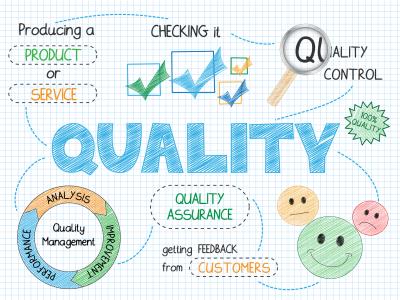Continuous Quality Improvement is a systematic approach to Quality Management for achieving ongoing improvements in business performance.

Quality Management: Building Consistency, Compliance & Customer Confidence
In today’s competitive environment, delivering consistently high-quality products and services is no longer optional — it’s essential. Quality Management provides the framework, processes, and discipline required to meet customer expectations, comply with industry and regulatory standards, and continually improve business performance.
Whether you operate in manufacturing, wholesale distribution, food production, jobbing, or service delivery, effective quality management ensures that every part of your organisation works together to produce reliable, repeatable outcomes.
What Is Quality Management?
Quality Management refers to the systems, processes, and tools used to ensure products and services meet defined standards. It encompasses four key pillars:
1. Quality Planning
Identifying the standards, specifications, and compliance requirements your products or services must meet — and building processes that support them.
2. Quality Assurance (QA)
Preventing defects by designing strong procedures, documenting work methods, establishing controls, and ensuring staff follow consistent processes.
3. Quality Control (QC)
Inspecting, measuring, and verifying outputs to ensure they conform to requirements. This includes checks, testing, audits, and non-conformance management.
4. Continuous Improvement
Using data and feedback to eliminate waste, reduce variation, and strengthen processes over time — often using Lean, PDCA, or root-cause analysis techniques.
Together, these elements create a proactive system that maintains high standards while driving ongoing improvement.
Why Quality Management Matters
Implementing strong quality management practices provides measurable benefits across your organisation:
Improved Customer Satisfaction
Delivering consistent, defect-free products builds trust and strengthens customer relationships.
Reduced Costs
Better processes reduce rework, scrap, delays, returns, and warranty claims.
Better Compliance
Documented systems help meet ISO9001, GMP, food safety, medical device, and other industry-specific standards.
Operational Consistency
Clear procedures ensure work is performed the same way every time, regardless of who is on the job.
Enhanced Decision-Making
Quality data, audit trails, and performance metrics support informed, confident business decisions.
Stronger Market Reputation
High-quality products build brand credibility and long-term competitive advantage.
Core Components of an Effective Quality Management System
A modern quality management approach includes:
Document Control & Version Management
Policies, work instructions, forms, SOPs, and quality manuals kept accurate, accessible, and up to date.
Non-Conformance & Corrective Action (NCR/CAPA)
Structured processes for capturing issues, analysing root causes, and preventing recurrence.
Process Workflows & Checklists
Defined steps and controls that standardise operations and reduce risk.
Inspection & Testing
Specifications, sampling rules, test results, and pass/fail criteria.
Training & Competency Management
Ensuring staff are trained, certified, and following approved methods.
Audit Management
Internal and external audits, findings, and action tracking.
Risk Management
Identifying hazards, evaluating risks, and implementing controls (FMEA, HACCP, risk registers).
Continuous Improvement Frameworks
Using PDCA cycles, Lean tools, and performance metrics to strengthen processes.
Quality Management and ERP
Modern ERP systems strengthen quality by integrating quality processes directly into operational workflows. When embedded into a system like Ostendo, quality becomes a natural part of daily activity — not an extra task.
An integrated ERP-driven approach enables:
- Automated quality checks at receiving, in-process, and dispatch
- Electronic checklists and inspection forms
- Traceability from raw materials to finished goods
- Batch tracking, serial tracking, and recall readiness
- Real-time NCR/CAPA visibility
- Calibration and maintenance scheduling
- Documented workflows and audit trails
- Dashboards and KPIs for quality performance
- Evidence-based compliance for ISO, regulatory, and industry standards
By integrating quality with production, inventory, warehousing, service, and procurement, ERP ensures that quality is managed at every step — not after the fact.
Quality Management as a Culture
True quality management is not just a system — it’s a mindset. It requires:
- Leadership commitment
- Clear expectations
- Transparent processes
- Empowered staff
- A willingness to improve
- Metrics that drive accountability
When quality becomes embedded in culture, improvement becomes continuous and long-lasting.



